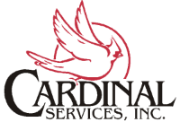Burnout is considered one of the key factors in “The Great Resignation” phenomenon.
In this tight labor market, employees at all skill levels have more options to find better employment conditions. Workers are not sticking around businesses where chronic stress is part of the job. This article reveals the five signs of worker burnout and what employers can do about it!
Understanding Workplace Burnout
The term burnout commonly describes feelings of being overworked or overwhelmed by one’s working conditions. This may include toxic work environments, experiencing micromanagement, taking on too much, or being asked to do more with less.
There are five stages of burnout that individuals and organizations need to assess and then take action to correct any progressively worsening working environment.
Stage 1: The Honeymoon Phase: When taking on new work, it is typical to experience minor bouts of stress, which is normal and should diminish over time.
Stage 2: Onset of stress: Stress onset can manifest in many ways, appearing as nervous anxiety, irritability, fatigue, or disorganization.
Stage 3: Chronic Stress: As stress levels rise faster and more frequently, mental and physical health risks may increase with employees reaching a dangerous tipping point.
Stage 4: True Burnout Can Create Safety Issues!
If employees reach the point of burnout, they can experience far more acute symptoms like cynicism and pessimism about their job, feelings of incompetence, unwarranted fears, strong desires to escape or self-isolate, and other serious physical health conditions.
Stage 5: Habitual Burnout
This most severe burnout phase occurs when one’s physical and emotional symptoms become embedded and impact one’s quality of life. Symptoms of this phase include stress-related physical reactions, chronic sadness or depression, mental exhaustion, low self-esteem and thoughts of suicide. Workers and employers must let go of any feelings of shame, guilt, or pride and ask for help! Left unchecked, the consequences of burnout can be devastating at both individual and organizational levels.
Prevention of Workplace Burnout
It is not unusual for a person to experience burnout in a job they like and want to keep!
So it pays to make an investment to protect workers from burnout. On an organizational level, burnout issues can become a catalyst for businesses to focus on better ways to get work done. Every aspect of a company’s business operation should be reviewed: investing in technology for better operational efficiency: training managers to look for signs of burnout, expanding staff communication programs that promote burnout awareness, monitoring work schedules and workloads, and increasing time off, compensation and expanded benefits for employees.
Why it Matters
Understanding employee burnout and taking steps to prevent it can help you keep good workers. Companies need to pay attention to this phenomenon and proactively take steps to offer meaningful solutions. Implementing organizational changes at the earlier stages of the burnout cycle through improved planning, staffing, tooling, and wellness programs sends a powerful message to employees that this is a good company to work for. Preventing employee burnout not only benefits the well-being of your staff, but is also a positive operational strategy for sustaining the profitability, competitiveness and longevity of any business!
CARDINAL SERVICES – YOUR HR WORKSITE RESOURCE
Cardinal’s HR Specialists can help you develop policies, programs, and procedures to promote employee mental health in the workplace. Give us a call. [800] 342-4742.

